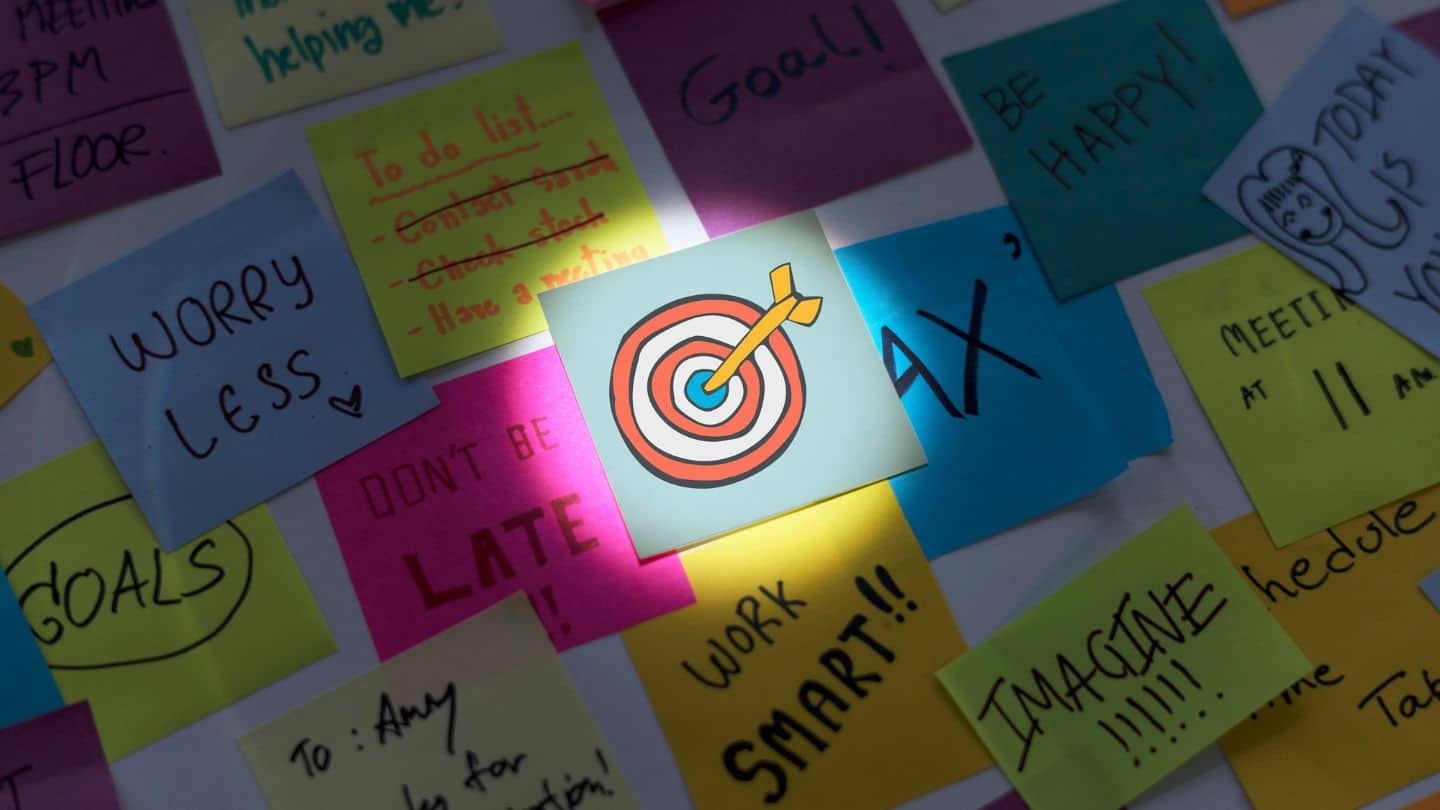We wanted this article to be both a reference (exhaustive) and a working basis (synthetic). It contains over 30 different sales techniques. Some are specific to a particular stage of the sales process, while others are more akin to a posture to be adopted throughout the sales cycle.
Whatever the case, these are 34 good reasons to sell more and better in 2024.
Sommaire
Sales techniques: Summary table
| Acronym | Definition | Sales stage |
|---|---|---|
| 4×20 | 20 first gestures – 20 centimetres distance – 20 first words – 20 first seconds | Making contact |
| SBAM/ SBRAM | Smile – Hello – Look – Goodbye – Thank you | Making contact |
| ABM | Account Based Marketing | Contact us |
| HERRMANN / HBDI | HBDI (Herrmann Brain Dominance Instrument) | Contact us |
| BANT | budget, authority, need and timeline | Discover |
| Active listening | Active listening | Discovery |
| FOCA | Facts – Opinion – Change – Action | Discovery |
| SPIN selling | Situation – Problems – Involvement – Necessity | Discovery |
| BEBEDC | Needs – Stakes – Budget – Deadlines – Decision-makers – Competitors | Discover |
| QQOQCCP | Who, What, Where, When, How, (How much, ) Why | Discovery |
| MEDDIC | Metrics – Economic byer – Decision criteria – decision process – identify pain – champion | Discovery, Argument |
| CAP SONCAS | SONCAS (Security – Pride – Novelty – Comfort – Money – Sympathy – Environment) + CAP (Characteristic – Advantage – Proof) | Discovery, Argument |
| DISC | Dominant – Influential – Stability – Conformity | Discovery, Argument |
| CRAC | Digging, reformulating, arguing, checking | Handling objections |
| Consultative selling | The salesperson is a consultant | Handling objections |
| APB | Advantages – Evidence – Benefits | Sales pitch |
| SNAP selling | Simple, iNvaluable, Always Align, Priorities | Sales pitch |
| AIDA | Attention – Interest – Desire – Action | Sales pitch |
| CAB | Feature – Advantage – Benefit | Sales pitch |
| CAP | Feature – Benefit – Proof | Sales pitch |
| BATNA | Best Alternative To a Negotiated Agreement | Negotiation |
| Downselling | Catch-up selling | Loyalty |
| Cross selling | Associate selling | Loyalty |
| Upselling | Upselling (or moving upmarket) | Loyalty |
| SIMAC | Situation – Idea – Mechanism – Benefits – Conclusion | The entire sales cycle |
| SANDLER | Sandler Method: reversing the roles of buyer and seller | The entire sales cycle |
| SPANCO | Suspect – Prospect – Approach – Negotiation – Conclusion – Order | The entire sales cycle |
| Inbound Sales | sales strategy is buyer-centric | The entire sales cycle |
| 4C | Contact – Know – Convince – Close | The entire sales cycle |
| CROC | Contact – Reason – Objective – Conclusion | The entire sales cycle |
| CCS | Customer Centric Selling | The entire sales cycle |
| Challenger Sale | Inform – Personalize – Take control | The entire sales cycle |
| 7C | Conceive – Contact – Know – Understand – Convince – Close | The entire sales cycle |
| ADAPAC | Reception – discovery – argumentation – decision-making – closing | The entire sales cycle |
#1 4X20
- Sales cycle stage: Making contact
The 4×20 rule is an indispensable sales technique for creating a good first impression with a customer. It has 4 components: the first 20 gestures, the 20 centimeters of distance (not too far away, but not too close either, to create a bond with the customer and put them at ease), the first 20 words (the sales pitch), the first 20 seconds (the first impression given to the customer).
#2 SBAM/ SBRAM
- Sales cycle stage: Making contact
The Smile, Hello, Goodbye, Thank you method is one of the fundamental sales techniques for making a good impression and hoping for a good customer experience. SBRAM is a variant, and includes eye contact. These are simple yet powerful gestures for strengthening customer relations and differentiating yourself from the competition.
#3 ABM
- Sales cycle stage: Making contact
In the “ABM” approach, we focus on a small number of high-value prospects whom we seek to engage through ultra-personalized campaigns. It’s quality that counts.
With ABM, you can focus your marketing efforts on high-potential accounts and minimize wasted resources.
#4 HERRMANN / HBDI
- Sales cycle stage: Making contact
The Herrmann model or HBDI method is based on the work of Ned Herrmann, who developed a model of how the mind works, represented as 4 quadrants (4 personality styles). It is used as a sales technique to enable sales reps to adapt their pitch to personality types and increase sales.
#5 BANT
- Sales cycle stage: Discovery
Divided into 4 parts, BANT is a method for qualifying and scoring prospects according to their conversion potential. In other words, whether or not a prospect is ready to make a purchase. It provides information on financial capacity, the decision-maker, the prospect’s needs and deadlines.
#6 Active listening
- Sales cycle stage: Discovery
Active listening means paying close attention to the needs expressed by prospects and customers. For example, by adopting an empathetic stance and rephrasing what they say, asking questions or seeking clarification. This technique improves customer satisfaction and loyalty.
#7 FOCA
- Sales cycle stage: Discovery
FOCA refers to the use of Fact,Opinion, Change andAction questions in a precise order. This sales technique enables you to understand a customer’s needs and adapt your sales pitch accordingly. It also highlights problems in the customer’s environment, encouraging them to seek a solution that will optimize their results.
#8 SPIN selling
- Sales cycle stage: Discovery
Theorized by N. Rackham, the SPIN SELLING method is based on a 4-step questioning process: assessing the customer’s current context(Situation), highlighting current or future difficulties(Problems), assessing the financial cost of the problem(Implication), identifying needs and benefits once obstacles have been removed(Necessity). It’s based on the idea that a customer buys after deep questioning.
#9 BEBEDC
- Sales cycle stage: Discovery
The BEBDC sales method is based on 6 steps that enable us to better understand a customer and his frame of reference: identification of the prospect’s needs, challenges, budget, deadlines, real decision-makers and direct competitors. It makes it easier to help a customer make the right decision, and gives you all the strategic information you need in the discovery phase.
#10 QQOQCCP
- Sales cycle stage: Discovery
This sales technique brings together all the knowledge about the state of a problematic situation and the possibilities for solving it. It is based on the Who, What, Where, When, How, How much and Why questions, and enables us to deal with a subject in its entirety. It’s a highly effective method, but one that requires you to answer the questions thoughtfully, and then follow the procedure to be applied.
#11 MEDDIC
- Stage of the sales cycle: Discovery, Sales pitch
The MEDDIC method focuses on customers/prospects as a means of gaining greater control over the sales process. It is based on 6 elements: Metrics (what is the economic impact of your solution for your prospects?), Economic Buyer (who will make the final purchasing decision?), Decision criteria (what criteria will influence the purchase?), Decision process (what are the stages in the decision-making process?), Identify pain (what obstacles does the prospect face?), Champion (who can be an ambassador for your product?).
#12 CAP SONCAS
- Stage of the sales cycle: Discovery, Sales pitch
SONCAS allows you to identify your prospects by asking them questions to better understand their profile, their expectations and the reasons behind their purchase. Salespeople then orient their sales pitch towards the prospect’s ideal. Ideally, between 10 and 15 questions should be asked to create a real dialogue.
#13 DISC
- Stage of the sales cycle: Discovery, Sales pitch
The DISC method is a psychological assessment tool for determining an individual’s psychological type. The acronym reflects the four personality traits identified: Dominance, Influence, Stability and Compliance.
It’s a kind of reading grid for human behavior, very useful for identifying a prospect’s psychological profile and enabling sales reps to adapt their behavior accordingly.
#14 CRAC
- Sales cycle stage: Handling objections
The CRAC method enables effective objection handling in just 4 steps: digging up the sales objection, reformulating the customer’s sales objection, arguing and handling the objections with an appropriate response, checking that the response given to the customer is accepted. It is extremely useful for dealing in detail with a prospect’s uncertainties.
#15 Consultative selling
- Sales cycle stage: Handling objections
Consultative selling is a sales technique in which the salesperson acts as a consultant, helping prospects to solve one or more problems. It relies on the salesperson’s expertise in response to the prospect’s pain point. The consulting part comes after the prospect’s needs have been identified and analyzed.
#16 APB
- Sales cycle stage: Sales pitch
The APB method enables you to convince a customer with a 3-step sales pitch: highlight the product’s benefits, provide concrete evidence of the product’s interest, and enhance the benefit to the customer. In short, APB enables you to target the benefits of a product to a given prospect.
#17 SNAP selling
- Sales cycle stage: Sales pitch
SNAP selling is a sales technique that involves influencing a prospect’s decision-making process. A customer makes 3 decisions before deciding to work with a company: he agrees to listen to the company, he initiates change, he selects resources. This technique involves understanding these 3 steps and adapting to a prospect’s way of thinking to show them the value of your proposal.
#18 AIDA
- Sales cycle stage: Sales pitch
The AIDA method describes the four stages a customer goes through when making a purchase: attention, interest, desire, action. By integrating these stages into a prospecting email or conversion tunnel, this method makes it possible to engage a prospect or customer more effectively.
#19 CAB
- Sales cycle stage: Sales pitch
CAB is a positive-influence sales technique based on three levels essential to any sales argument: the characteristic (what defines the product or service), the advantage (what sets the product or service apart from competing products/services) and the benefit (the good that flows from the advantage).
#20 CAP
- Sales cycle stage: Sales pitch
CAP is a variant of the CAB method, based on 3 levels of argumentation : characteristic, advantage, proof. This method enables a salesperson to produce a complete sales pitch that emphasizes the benefits for the prospect.
#21 BATNA
- Sales cycle stage: Negotiation
The BATNA method gives salespeople a second chance to present new arguments in response to a prospect’s objections. This technique is based on reserve conditions, i.e. the limits of the proposal made. It’s a security that allows both parties to benefit from the contract.
#22 Downselling
- Sales cycle stage: Loyalty
Downselling is a sales technique that complements upselling and cross-selling. It consists in offering a more affordable or acceptable product or service directly after a customer has turned down the main product. For example, offering a single module instead of the complete e-learning course.
#23 Cross selling
- Sales cycle stage: Loyalty
Cross-selling recommends products that complement the product purchased: the aim is not to change the customer’s choice, but to complement it. For example, suggesting a phone case to a customer who is buying a phone.
#24 Upselling
- Sales cycle stage: Loyalty
Upselling involves selling a better, more expensive version of your product, or selling more of it to improve the customer experience.
#25 SIMAC
- Sales cycle stage: The entire sales cycle
The SIMAC method enables you to develop a sales pitch by capturing the customer’s interest and convincing him or her. It is based on 5 distinct stages in the sales process: situation (understanding the customer’s needs), idea (proposing an idea to arouse interest), mechanism (detailing the idea and its methods of application), advantages (product benefits), conclusion (inviting the customer to make the right decision).
#26 SANDLER
- Sales cycle stage: The entire sales cycle
SANDLER is a sales technique that reverses the roles of buyer and seller. It’s based on the idea that both parties must be equally invested. The buyer almost convinces the salesperson to sell. This method presupposes the creation of solid trust between buyer and seller.
#27 SPANCO
- Sales cycle stage: The entire sales cycle
The SPANCO method allows you to follow a sales negotiation step by step, from making contact to closing a deal. It’s a sort of roadmap for converting a prospect into a customer. Each letter in the acronym corresponds to a phase in the process: suspect (target definition), prospect (lead identification), approach (solution evaluation and identification), negotiation (sales proposal), conclusion (sale), order (order management and follow-up).
#28 Inbound Sales
- Sales cycle stage: The entire sales cycle
Inbound sales involves placing the customer at the center of an ultra-personalized sales process, rather than extolling the virtues of the company or product. The strategy focuses on the buyer. This method is based on 4 steps: identify, connect, explore, advise.
#29 4C
- Sales cycle stage: The entire sales cycle
The 4C method is a sales technique that makes it easier to convince a customer to make a purchase. It is based on 4 phases: contact (making a good impression on the prospect), getting to know (identifying needs), convincing (using appropriate arguments), concluding (maintaining confidence). It’s an excellent way to establish a quality customer relationship.
#30 CROC
- Sales cycle stage: The entire sales cycle
The CROC method is a sales technique used in telephone prospecting to structure sales calls. It is based on the 4 stages of a telephone call: contact (punchy pitch), reason (grabbing attention with a real value proposition), objective (engaging the prospect in the sales cycle), conclusion (setting up a customer meeting or even a sale).
#31 CCS
- Sales cycle stage: The entire sales cycle
Customer-centric selling consists in focusing on the prospect’s needs and objectives through a series of targeted questions that enable the salesperson to propose a suitable product. This method is based on a results-oriented sales pitch, with concrete examples to convince.
#32 Challenger Sale
- Sales cycle stage: The entire sales cycle
The Challenger sale method comes from the book of the same name (B. Adamson, M. Dixon), which divides salespeople into 5 categories and argues that the most successful salespeople are the Challengers. It’s based on the premise that there’s no need to establish a relationship with a prospect, since they’re too busy and too informed. The salesperson’s role is not simply to present the product. The important thing is to understand it, analyze it and adapt it to the prospect.
#33 7C
- Sales cycle stage: The entire sales cycle
This sales technique is based on the logical sequence of the 7 stages of a sale: design (preparing the sales plan), contact (prospecting), know (knowing the prospect’s needs), understand (reformulating the issues), convince (presenting the product/solution), close (making the sale), retain (satisfying the customer and building loyalty).
#34 ADAPAC
- Sales cycle stage: The entire sales cycle
ADAPAC is a sales technique based on five stages: reception, discovery, argumentation, decision-making and closing. It enables sales reps to guide customers through the sales process and offer them personalized service. This method is particularly well-suited to high value-added products.






